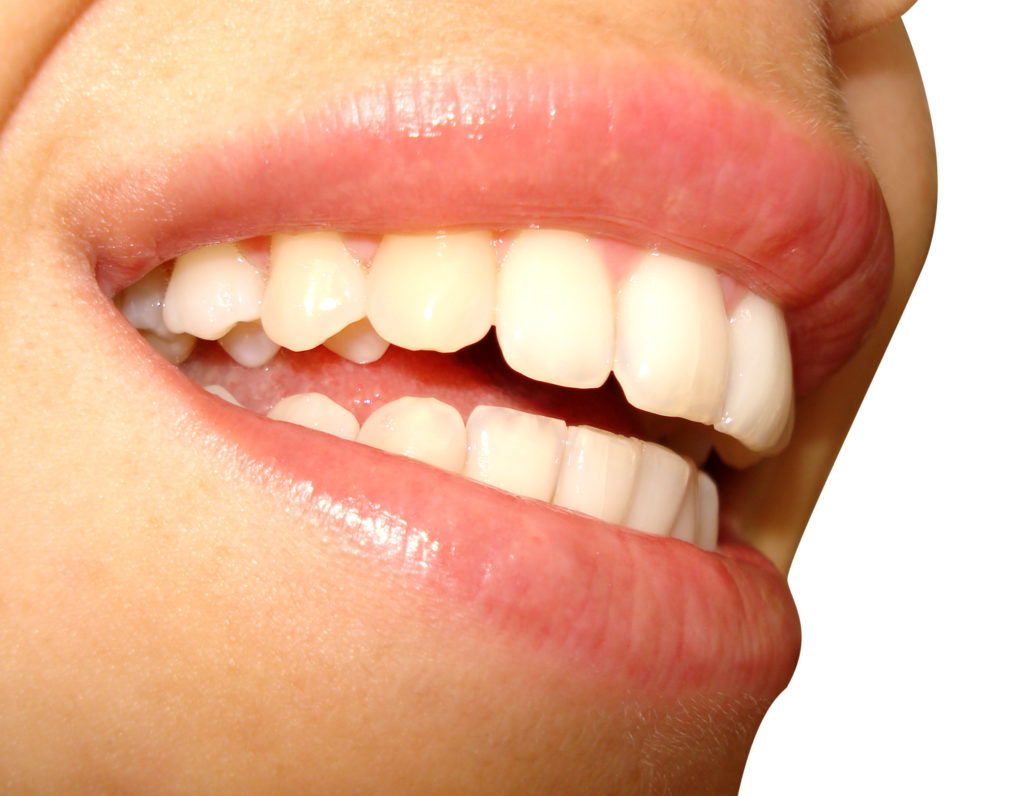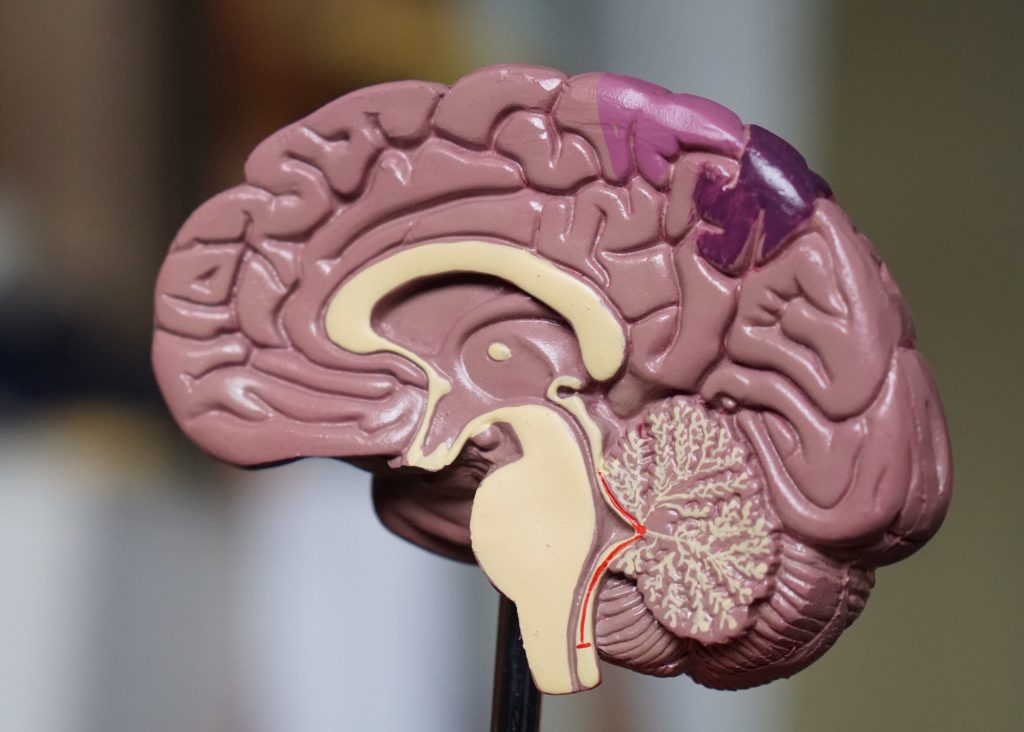
Have you ever considered the influence that your food choices have on the way you breathe, your facial appearance and the health of your body? Our diet influences the way the muscles and bones in our face develop and grow. Our food choices also influence our smile, the spacing of our teeth and the shape of our dental arches. Food choices even influence the way we breathe and the development of our airways.
A diet that consists of soft, processed foods negatively affects the development of facial structures and the dental arch leading to a under developed midface, short jaws, high vaulted palate, crowded smile and missing teeth. Dr. Weston Price spent 10 years observing various indigenous tribes who had perfect dental arches, minimal tooth decay and excellent health while eating their traditional diets. He found when a modern diet including refined flours, sugar, oils and canned foods was adopted signs of disease and degeneration quickly became observable. According to archeologists, tooth decay became prevalent 10,000 to 14,000 years ago during the agriculture revolution. We began suffering from poor alignment and wisdom teeth impaction 200 to 300 years ago during the Industrial revolution, presenting with smaller mouths and jaws.https://pubmed.ncbi.nlm.nih.gov/21300266/https://pubmed.ncbi.nlm.nih.gov/24809573/https://pubmed.ncbi.nlm.nih.gov/27319035/
There are many essential nutrients needed for our dental and overall health, but the most important is oxygen. Cardiovascular disease, sleep apnea, digestive dysfunction and behavior issues such as ADHD are linked to oxygen deficiency. One classification of sleep apnea is obstructive sleep apnea, where breathing stops temporarily when the airway is obstructed by the tongue and soft palate. Obstructive sleep apnea has been commonly thought to be a problem of the overweight but there is a classification of breathing disorders that affect the young and thin called Upper Airway Resistance Syndrome(UARS). These patients have airways that collapse more easily due to their smaller mouths and jaws. Symptoms of UARS include: digestive issues like IBD, Crohn’s disease, chronic diarrhea, constipation, bloating or acid reflux; cold feet and hands; low blood pressure, dizziness, and light headedness; Chronic runny or stuffy nose; sinus pain, sinus headaches, migraines, tension headaches; stress, teeth clenching, depression, teeth grinding, ADHD in children.
When the muscles and jaws to not develop correctly, this affects the development of the arch, the nose and placement of our tongue in our mouths. Our bodies compensate by breathing through our mouth. Mouth breathing affects facial development and appearance. Normal development presents with well-defined cheeks, closed mouth at rest and a square jaw angle. Signs of poor development include dark circles under eyes, open mouth at rest, a long face and rounded jawline. Most common complaints with mouth breathing are dry mouth and bad breath. These complaints are valid and noteworthy, but the implications of mouth breathing are more vast and severe. When we breathe through our mouths, nitric oxide can’t be produced. According to Patrick Mckeown in his book, The Oxygen Advantage, “Nitric oxide plays a vital in role in reducing blood pressure, maintaining homeostasis, immune defense and neurotransmission.” Mckeown explains that a habit of breathing through the mouth for an extended period of time, puts our bodies in a constant sympathetic state known as the “fight of flight” state. The fight or flight mode is important in an emergency situation, like running from a bear, but not healthy for extended periods of time. This puts stress on the adrenals which has wide spread consequences to our health such as digestive dysfunction, blood sugar dysregulation, hormone imbalance and adrenal fatigue. https://www.oralhealthgroup.com/features/mouth-breathing-physical-mental-emotional-consequences/
In his book The Dental Diet, Dr. Stephen Lin suggests“To properly digest your meals you need to be in parasympathetic state, the “rest and digest” state. It is helpful to take 5 deep breaths through your nose. Breathe in for 3 seconds and breathe out for 4 to 5 seconds. This will help to switch on your parasympathetic nervous system, and you’ll absorb nutrients from food more effectively.” Mouth breathing while sleeping has also been associated with an obstructed airway contributing to the above-mentioned sleep apnea. Dr. Lin states, “ When people breathe through the mouth, their lungs get dry, unfiltered air and no nitric oxide, the lack of which can damage their heart muscles, brain tissue, and potentially every cell in their body. https://pubmed.ncbi.nlm.nih.gov/18494947/ https://www.ncbi.nlm.nih.gov/pmc/articles/PMC5656452/
Seasonal allergies are a common affliction of millions, which can complicate the ability to breathe through the nose contributing to the problematic mouth breathing habit. Seasonal allergies are caused by the immune system responding to an allergen in the air like pollen, dust, mold or pollution. The immune system is often on high alert due to an imbalance of the gut microbiome and chronic intestinal inflammation. The immune system then overacts when faced with these environmental irritates. Chronic inflammation in the gut is often referred to as intestinal hyperpermeability or leaky gut. Poor digestion of foods due to a dysfunctional upper gastrointestinal tract can often be the underlying cause for imbalance of the gut microbiome and intestinal hyperpermeability. Because of intestinal hyperpermeability, sensitivities to foods can develop to foods we eat on a regular basis. Food sensitivities can increase gut inflammation and heighten seasonal allergies. Eliminating food allergens, restoring the gut lining and flora, as well supporting digestive function alleviates the severity of seasonal allergies. Consequently this will improve our breathing. You can read more about intestinal hyperpermeability here. https://pubmed.ncbi.nlm.nih.gov/20345982/https://hopefoundwellness.com/are-your-guts-leaking/
Removing large, swollen, tonsils and adenoids are often recommended to open the patient’s obstructed airway. However, a protocol that includes myofunctional therapy, airway orthodontics, and nutritional therapy should be considered as a nonsurgical approach. In some cases, surgery may be necessary but including the aforementioned protocol ensures a better long term outcome for the patient.
Orthodontic interventions include the placement of palate expanders at a young age to encourage proper growth of the facial structures including the maxillary and mandibular jaw bones. This allows for space for the tongue to rest and proper facial muscle development. The use of metals in the mouth can be a concern so supporting gut health and detox pathways through nutritional therapy while using orthodontic appliances would be an important consideration. https://www.ncbi.nlm.nih.gov/pmc/articles/PMC3310133/
Myofunctional Therapy is basically physical therapy for the muscles of the face that are used to chew and swallow. The purpose of myofunctional therapy is to retrain the muscles and to obtain a proper posture of the tongue, lips and jaw. Exercises to promote nasal breathing are also part of the protocol. The Buteyko breathing method is commonly utilized to help patients learn how to permanently switch to nasal breathing. There is an application available to download that walks you through some of these exercises at https://buteyko.app
Nutritional therapy would focus on a protocol to encourage optimal dental and overall health. The exclusion of processed foods, refined sugar, flours, and oils are key along with including a variety of whole foods, quality fruit and vegetables, clean proteins, good fats and clean water. Minerals, fat soluble vitamins, protein and collagen are key nutrients and must be present. Supporting gut heath and balancing the microbiome are important as well as identifying and eliminating food allergens. Check out my last post for more detailed information regarding recommendations that promote good dental health. https://hopefoundwellness.com/your-health-is-in-your-mouth/
Food has influence and power over the development of our faces, smiles and health. The modern, soft, processed diet negatively influences the structural development of the face, jaws and airways which is linked to many health issues. We can promote proper facial growth, tongue posture and adequate airway utilizing a multifaceted approach including airway orthodontics, myofunctional and nutritional therapy.
Resources:
1.Price, W.A. (2018) 8thed. Nutrition and Physical Degeneration. Price-Pottenger. Lemon Grove, CA.
2. McKeown, P. (2015). The Oxygen Advantage.HarperCollins. New York City, NY.
3. Lin, S. (2018) The Dental Diet. Hay House. Carlsbad, CA.






